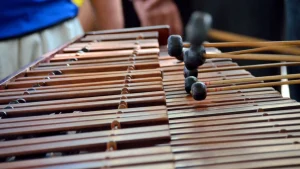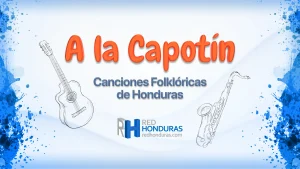Post-Classic Period – The Maya Civilization
Return to the main article The Maya Civilization
This period spans from 1000 to 1687. Once the ceremonial Maya centers of the Classic period were abandoned, the driving force of this era became a migratory stream ethnically identified with the Maya people rooted in the region, bringing with them a mestizo culture with strong Nahuatl influence.
This stream, called putún or Maya-Chontal, inhabited the southern region of Tabasco and had close commercial relations with the peoples of Central Mexico and the Nahua groups established on the periphery of the Maya region, such as in Xicalango. Their presence would break the precarious balance in which the theocratic world tried to maintain itself, and it was the Putunes who took advantage of the fall of this order to introduce a new way of life and dominance over the region.
The territory from which the Putunes originated was the delta of the Usumacinta and Grijalva rivers, a region of rivers, streams, lagoons, and swamps where water transportation prevailed. This made the Putunes excellent navigators and merchants who controlled the maritime trade routes around the Yucatan Peninsula, from Laguna de Términos in Campeche to the center of Sula in Honduras.
The Putunes settled south of the Pasión River and called their land Acalán («place of canoes»). They founded two main settlements: Potonchan (Putunchan), located at the mouth of the Grijalva River, and Itzamkanac, near the present-day Candelaria River that flows into the Laguna de Términos. Itzamkanac was the capital of Acalán, but Potonchán may have been the first settlement. Indeed, Potonchán dominated trade by interacting with the Zoque people and the inhabitants of the highlands of Chiapas. In contrast, Itzamkanac was located too far upstream to become an important trading port. Hence, Xicalango, the major commercial center located in the Laguna de Términos and controlled by Itzamkanac, fulfilled this function.
They established numerous ports along these routes, including Cozumel, Xel-Há, Bahía de la Ascensión, and Polé (present-day Xcaret) in Quintana Roo, which were dominated by a branch of the Putunes known as the Itzaes («those who speak the language haltingly»).
From Polé, the Itzaes penetrated inland to conquer Chichén in 918, and since then, it took the name Chichén-Itzá. By around 950, they controlled the entire eastern region up to Bakhalal (Bacalar) and Chactemal (Chetumal). Once the area was under their control, this Itza branch of the Putunes established communication with their Mexican neighbors in southern Campeche. It is believed that the Itzaes, who spoke both Chontal and Nahuatl and had absorbed profound influences from central Mexico, received Quetzalcóatl, known in Maya as Kukulkán. He had fled from Tula and allied with the Chontales to conquer Chichén Itzá in 987. It is from this period that Toltec influences on Maya art and architecture originated.
It is worth noting that authors such as Enrique Florescano, Leonardo López Luján, and Alfredo López Austin cast doubt on the historical arrival of Quetzalcóatl in Yucatán. Firstly, because the dates do not align. Secondly, because similar arguments were presented by the Mixtec and Tarascan nobles, as well as later by the Mexicas, to legitimize their position in the social structure. Both the myth of Tollan and the flight of Quetzalcóatl, as well as artistic expressions and the inherently warrior nature of Mesoamerican societies during the early Post-Classic period, are part of a complex widely spread throughout the region at that time.
Around the year 1000, Chichén Itzá formed an alliance with the Cocomes of Mayapán and the Xiu of Uxmal. This alliance is known as the Confederation or League of Mayapán, which was broken in 1194 by Hunac Ceel, leader of the Cocomes. Hostilities led to the defeat of both the Itzaes and the Tutul Xius. The rise of Chichén-Itzá and its Maya-Toltec rulers ended in chaos by the end of the 13th century. The Itzaes abandoned their city and headed to the deserted jungles of Petén. There, on Lake Petén Itzá, they founded a new settlement located on the island of Tayasal.
The supremacy of Mayapán came to an end around 1441 when the Xiu leader of Uxmal, Ah Xupan Xiu, destroyed it by massacring the Cocom royal family. At its height, Mayapán had up to 12,000 inhabitants. It was a fortified city surrounded by a stone wall. Clear Toltec influences can be seen in its architecture.
In the eastern part of the peninsula, as noted by Eric J. Thompson in his book «The Inhabitants of the Eastern Coast of the Yucatán Peninsula,» «The Putunes retained control over the Bakhalal and Chetumal regions during the period of Mayapán’s dominance […] in the province of Uaymil, a dialect similar to the one spoken in Campeche was used, and naturally, the documents of Paxbolón stated that Chetumal paid tribute to the Acalan Putunes.» Mayan chronicles clearly establish that the Putunes maintained their power over the Bakhalal and Chactemal regions during the period of Mayapán’s dominance (1200-1480). However, they did not abandon their control over their former territory in southern Tabasco and instead made constant trips back and forth to Potonchán.
Upon the fall of Mayapán, the Yucatán Peninsula was divided into 16 small states, chiefdoms, or provinces, each with its own ruler. Among these chiefdoms, there were constant rivalries and wars, remnants of the relentless struggles between the Xiu and Cocom. This was the prevailing situation at the arrival of the first Spaniards. In the Petén region, Tayasal of the Itzaes, Zacpetén of the Ko’woj, and Queixil of the Yalain were the last Maya and Mesoamerican cities to be conquered, in 1697, after several failed attempts, including one by Hernán Cortés in 1542.
In the southern highlands, other Maya states emerged, including the K’iche’ kingdom based in Q’umarkaj (Utatlán), which produced the Popol Vuh, the most well-known historical and mythological work of the Maya. Other states in the highlands of Guatemala include the Mam kingdoms in Huehuetenango (Saculew), the Kaqchikel kingdom in Iximché, the Chuj kingdom in San Mateo Ixtatán, and the Poqomam kingdom, possibly in Mixco Viejo.
Return to the main article The Maya Civilization




